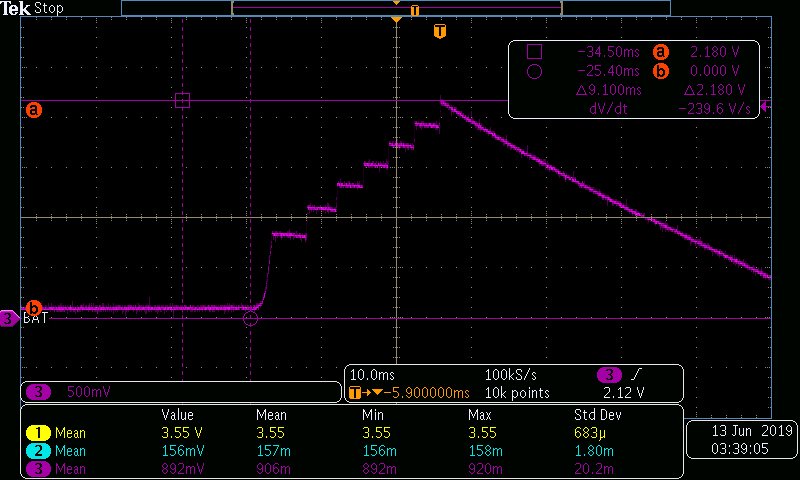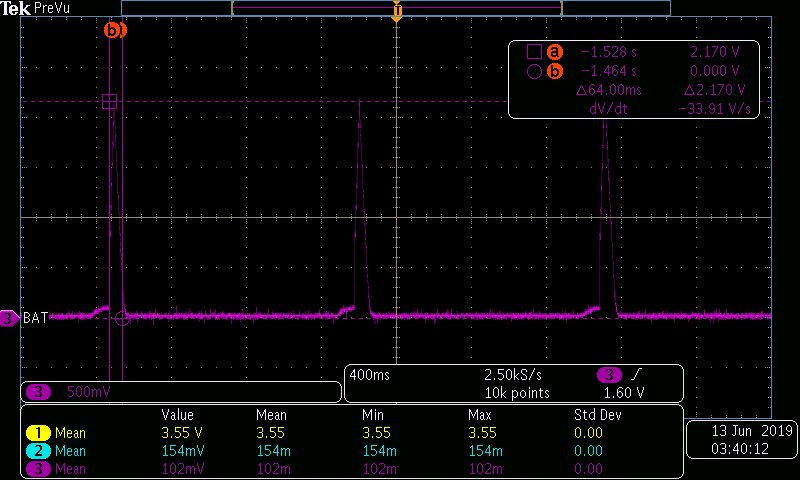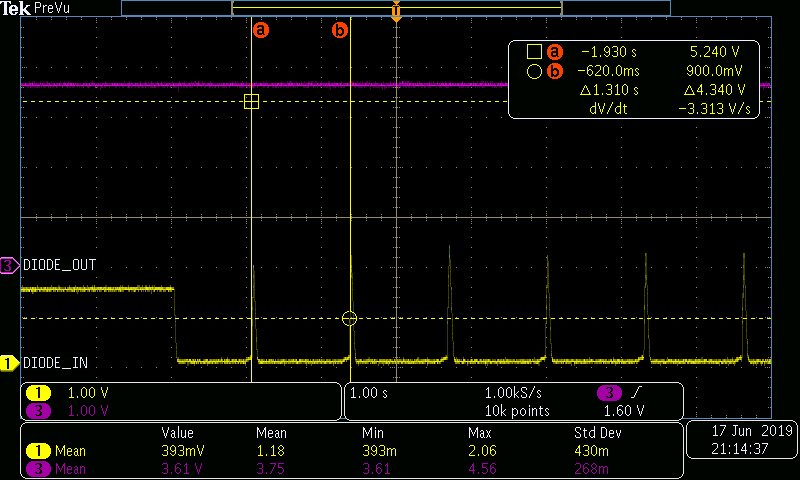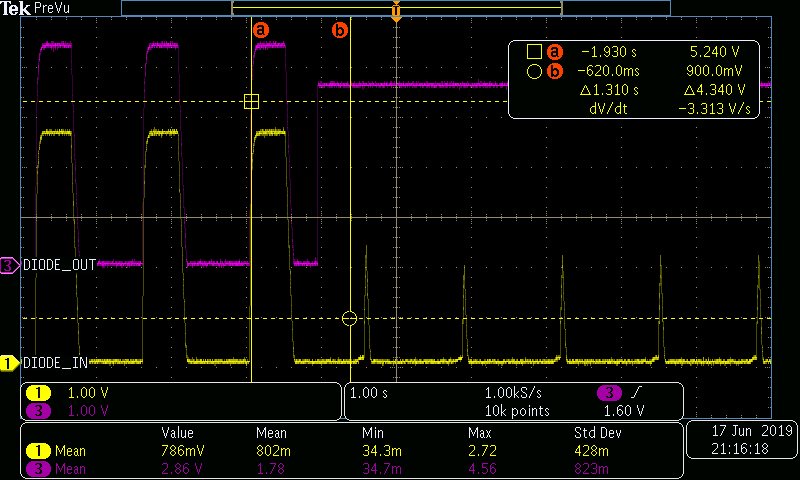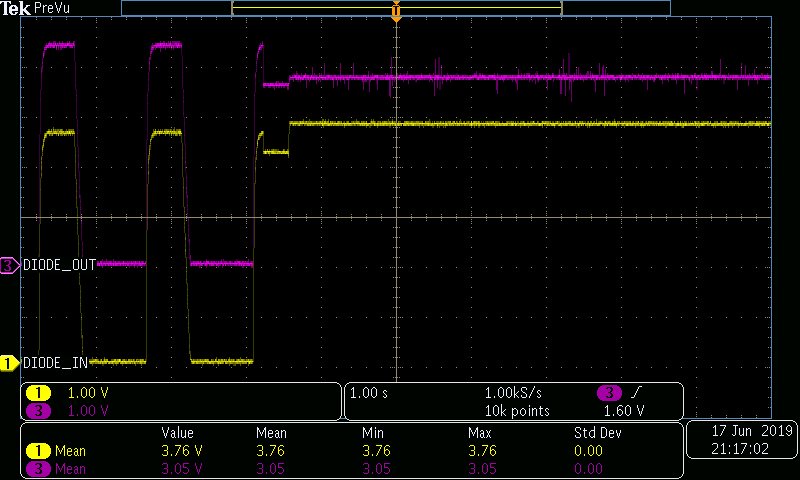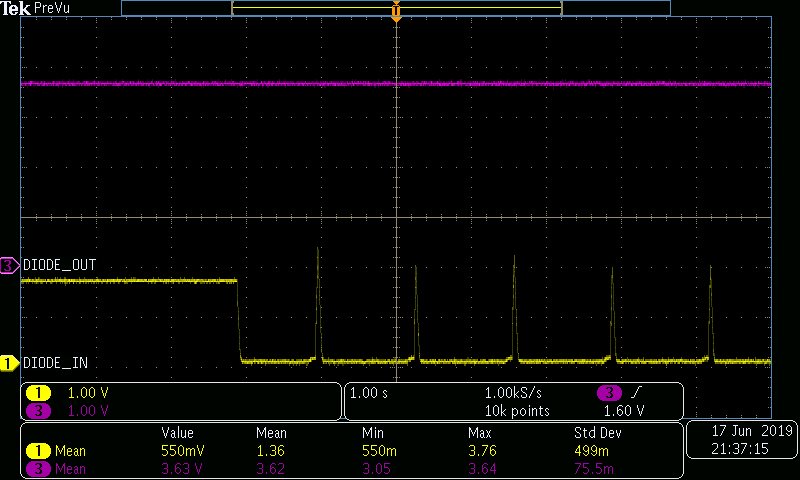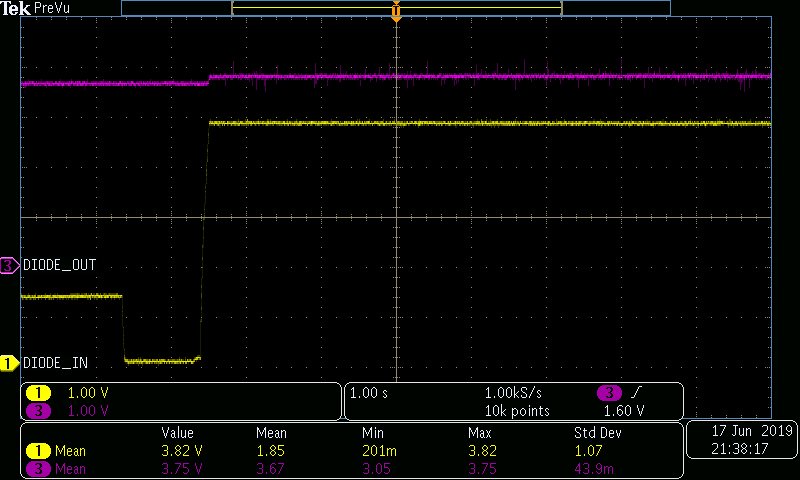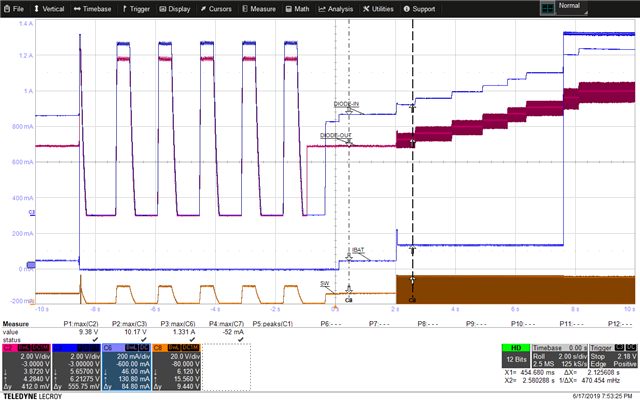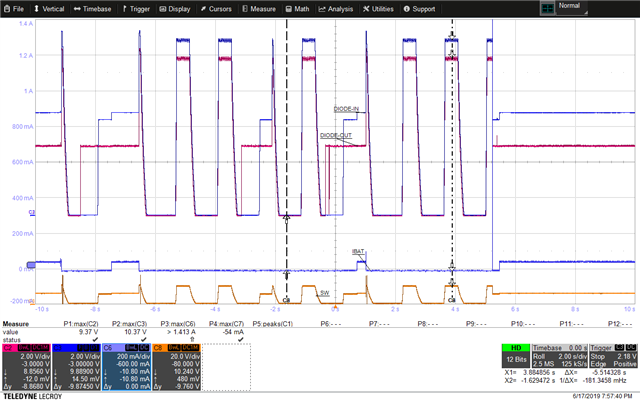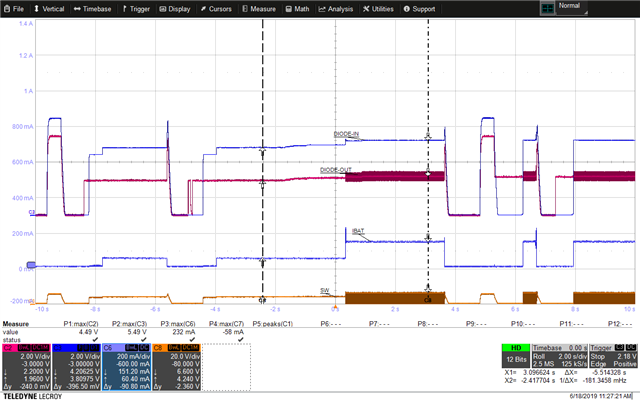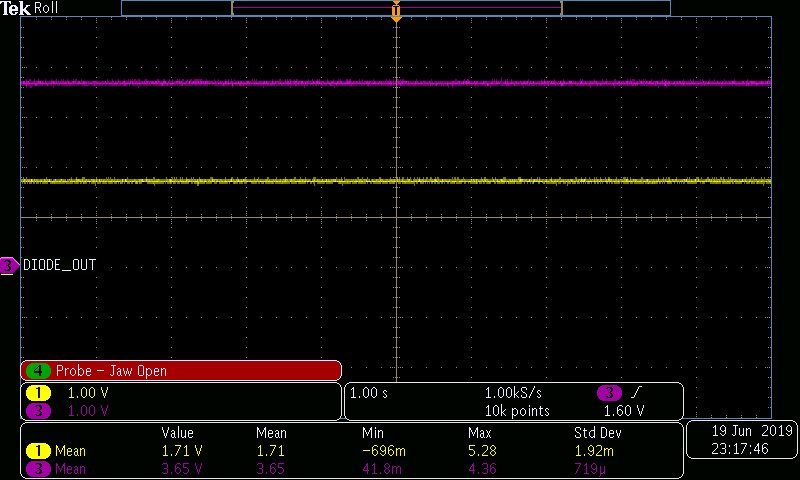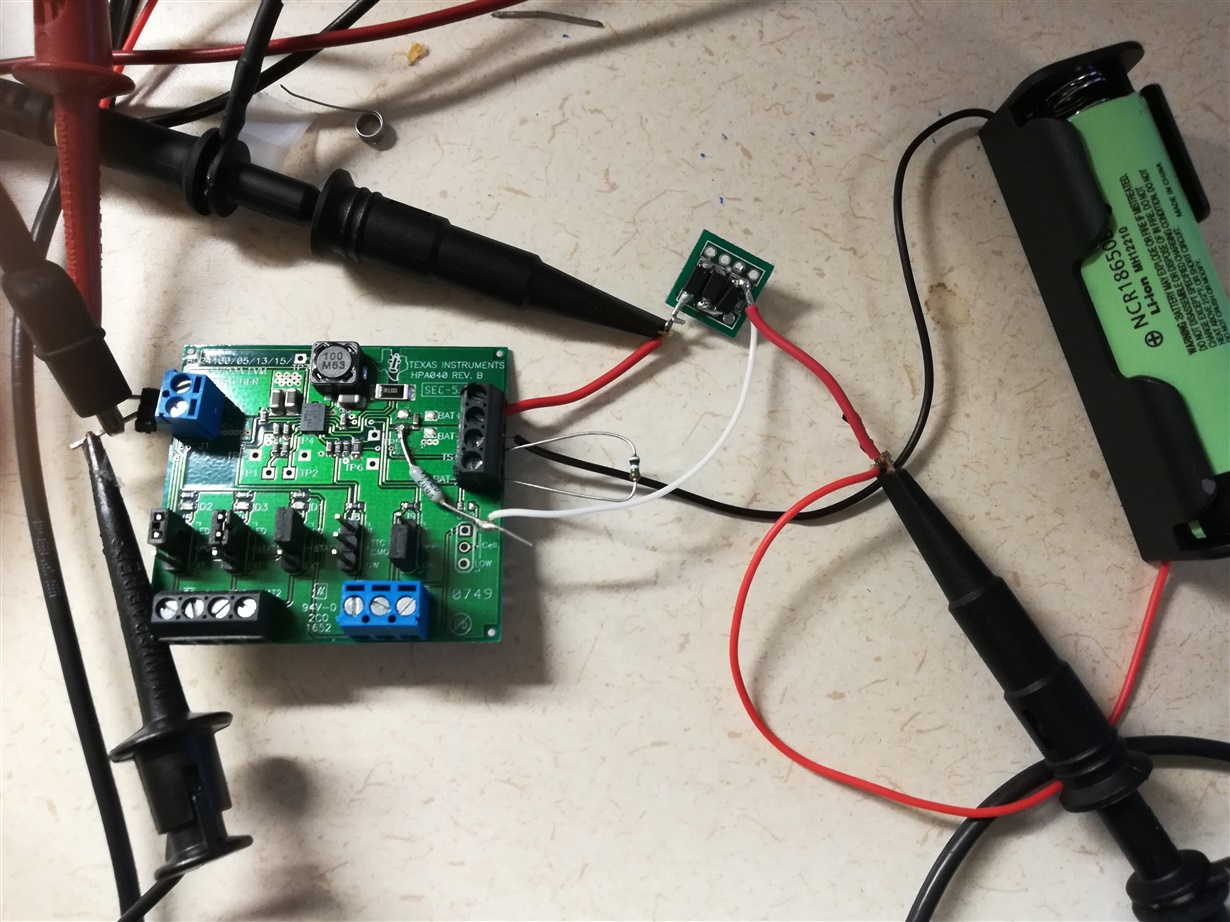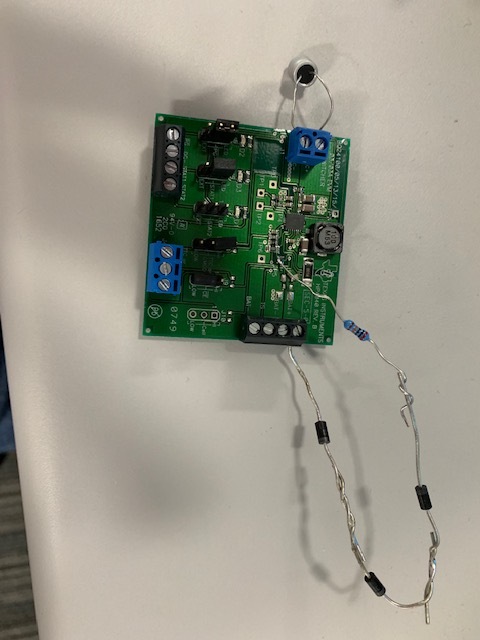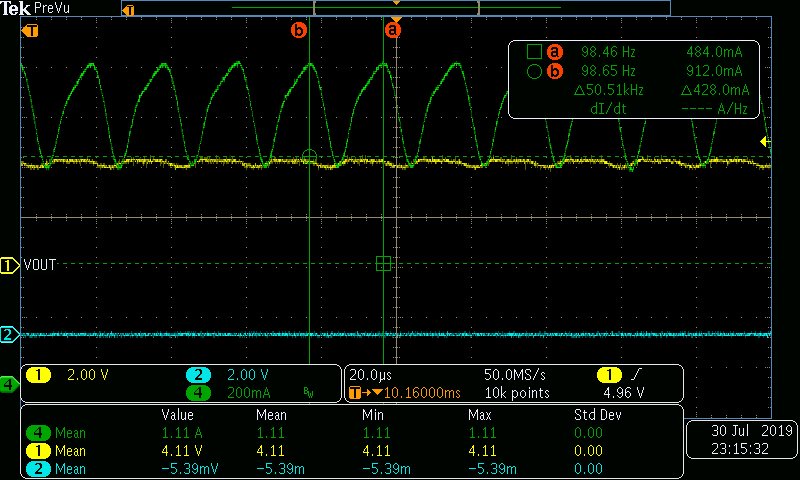Other Parts Discussed in Thread: BQ24130
Hello,
I am using the charger in an application where i have 3 series schottky diodes on the output of the charger and the feedback network is connected after the diodes to compensate for the diode drop. The charger is inside the battery pack and the cell is always connected after the 3 diodes. when i provide power to the charger, it goes into hiccup mode (different from the detection) and never recovers.if i short the diodes then the charger works normally. I need the series diodes for protection and cannot get rid of them.
Also, when the diodes are connected but the cell is disconnected, the charger enters the detection pulse mode and depending on what level of the pulse i connect the cell, it chargers or not. for example if i connect the cell when the pulse is at 0V it doesn't latch but when i connect the cell when the pulse is at the positive level, it engages and charges every time.
I am attaching the scope plot of the hiccup and also a snapshot of the schematic.
please help!


